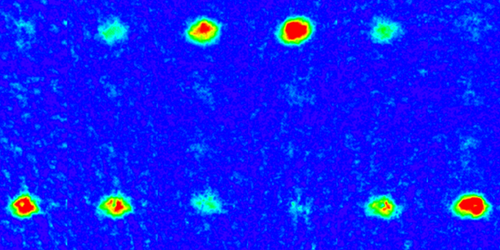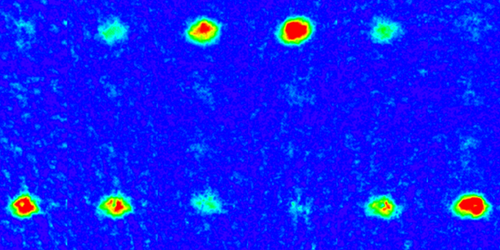A More Precise Atom Interferometer
An atom interferometer measures very small forces and energies. To do that, it first separates a beam of atoms into two branches and then recombines them to form an interference pattern. This pattern changes when a force acts differently on the two atom branches. Researchers can increase an interferometer’s precision by accelerating atoms in one branch with respect to the other branch before recombination. However, in practice, the photons used for this acceleration introduce an uncertainty to the atoms’ phase that instead reduces interferometer precision. Now Katherine McAlpine and colleagues at the University of Washington, Seattle, demonstrate a method to efficiently transfer photon momentum to the atoms while minimizing uncertainty.
In their experiments, the team held ytterbium atoms in an optical lattice that they created by shining two green lasers at the atoms. They kept the atoms within the optical lattice, while simultaneously changing the frequency of the trapping lasers, causing the photons to impart momentum to the atoms. By repeating this process, they were able to transfer 40 photons’ worth of momentum to each atom.
The team found that when the amplitude of the standing waves was of a so-called magic depth, the atoms’ phase was unaffected by the momentum transfer from the photons to the atoms. This magic depth condition only existed when the two trapping lasers were set to a particular intensity and offset from each other by a certain frequency. They say that their specific interferometer design could improve measurements of the fine-structure constant—a test of quantum electrodynamics theory—by about 16 times. The method could be adopted for precision tests of gravity.
This research is published in Physical Review A.
–Sophia Chen
Sophia Chen is a freelance science writer based in Tucson, Arizona.





